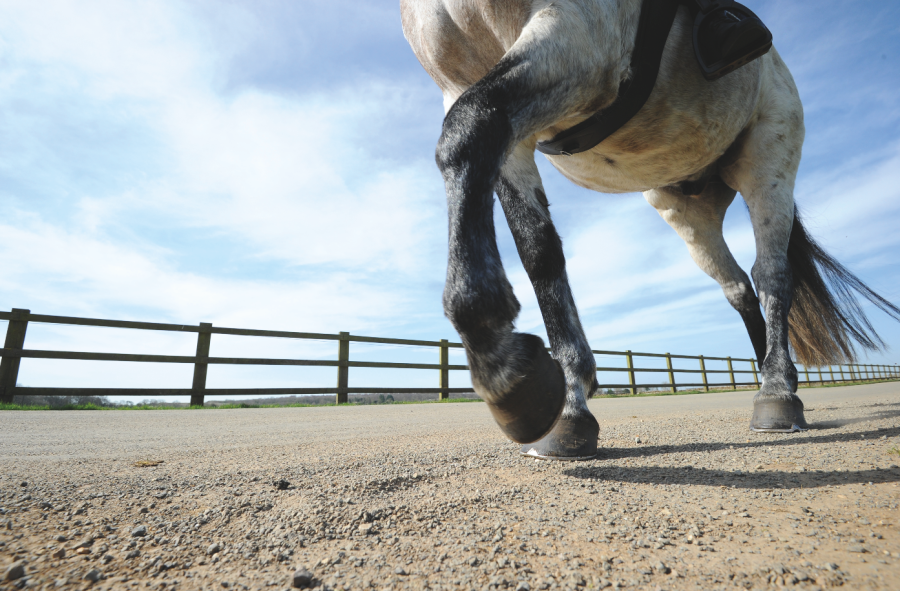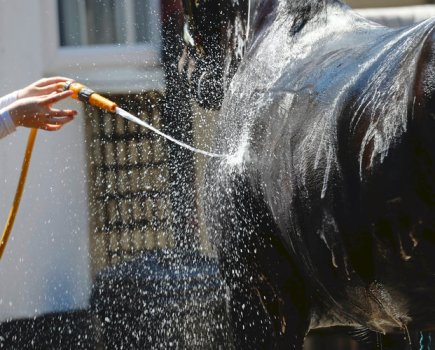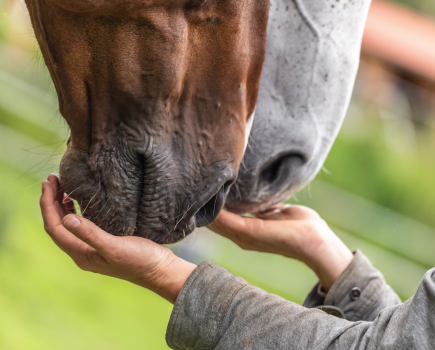Are you concerned about whether you should be trotting on the road and how long you can safely do so when hacking your horse? Road work has long been associated with getting horses fit, but there’s far more to it than many riders think.
“Long slow work is a good basis for increasing bone strength and muscular and cardiovascular fitness, and hacking out is perfect for this,” says equine scientist Dr David Marlin. “However, given the high prevalence of lameness and arthritic joint injury/disease in horses, there are some key points to consider with respect to roadwork.”
Research has shown that roadwork results in forces on the hoof around 20 times higher than working on good grass or artificial surfaces, and that is the same for both shod and unshod horses.
“Barefoot horses are at similar risk from roadwork as shod horses with respect to forces transmitted up the leg — the difference between shod and unshod is in how the force travels through the foot,” explains David.
Weighing up the risks
Another key point is that roadwork does not harden or strengthen tendons.
“Roadwork does increase bone strength, but you only need a few minutes of trot each day to achieve this,” adds David. “Horses will adapt to doing roadwork three to four times a week in three to four weeks. Beyond that, the fitness benefit will be negligible, and you need to weigh up the benefits over the negatives as roadwork does contribute to joint and cartilage deterioration, increasing the risk and accelerating the onset of arthritis.
“There is evidence that increased amounts of controlled exercise can enhance tendon strength in young, musculo-skeletally immature horses (horses less than about two years of age), but this was not done on roads.”
Although you should be aware of the amount of time spent in trot on the roads, there is no limit to walking on the road.
“Trotting should be limited to no more than five minutes per day,” advises David. “I realise many people have limited options of where they can ride, and road work per se is not bad for your horse, but consider limiting the amount of trotting you do on the roads. Most horses will not become lame or be unfit because they have done too little roadwork.”
Trotting on the road: damage limitation
Working a horse on the road will have some impact on improving bone density through high impact loading on the roads, but it can also have a negative effect on other structures.
“The problem is, it’s likely you only need to trot for 50m a day to get that effect on bone density, and once you go past that, the negative effect is concussion, which affects cartilage in the fetlock and also in the knee,” says David.
“It may not be good for the hoof to have that concussion either. It’s not hardening the tendons, which is the common belief, and after two or three weeks, it won’t be doing anything more for cardio or muscular fitness.
“Three weeks of road work is probably enough for most horses if they are going out five or more times a week.”
Road work for horses
Every horse is an individual and should be treated as such when ridden and trained.
“It’s important to consider the cost benefit of early season road work,” says David. “If your horse has had concussive laminitis, or has evidence of arthritic changes, consider that long periods of trotting on the road may not actually be beneficial.”
Symptoms of a horse that has overdone it on the road include:
- An increase in heat in lower legs that wasn’t there before
- Filling around the joints, which suggests inflammation in the joints
- Lameness
- Splints and sore shins
“Palpate your horse’s legs regularly, feeling for heat and swellings and check for lameness,” says David. “Look
out for the warning signs and maybe back off for a few days or call your vet.”
Variety is important
Evidence shows us that riding our horses over a variety of different surfaces is the best way to help keep them fit and sound.
“Variety of surfaces is important,” says David. “Research shows that using a variety of surfaces reduces the risk of injury, and exclusive use on a single surface is likely to increase the risk of injury,” he continues.
“We also know that extremes of surfaces — very deep or very hard — increase the risk of injury, and surfaces that change suddenly are a huge risk too, such as riding from soft into sudden hard going. It’s about consistency and variety while avoiding extremes and sudden changes.”
Correct care
How we care for our horse’s legs before and after exercise is just as important as when we are working them.
“We know that horses’ tendons can get very hot, and that heat leads to inflammation which can cause a degradation in the tendon matrix and therefore a loss in strength and integrity,” David explains. “We know that tendon injuries are usually the result of accumulative damage over months or years rather than single unfortunate events caused by the wrong placement of the foot. The latter does occur, but the majority of the injuries are overuse injuries.”
In the winter months, low intensity exercise without boots is unlikely to see excessively high temperatures in the tendons.
“If you are galloping at any time of the year, there is a high risk of the tendons getting very hot,” says David. “If you do use boots, they should be used on the basis of risk [see below]. It’s important to give soft tissue plenty of time to warm up before asking for anything strenuous so as to prevent strains and tears.
“If it’s cold, spend more time warming up in walk before trotting, so around 10 to 15 minutes in walk in cold weather to reduce the risk of injury,” advises David.
Leg protection for road work
For many, a set of boots is an essential part of your horse’s kit. But, warns David, it is essential that you choose the type that are best-suited for the type and intensity of work you are planning to do.
“Choose boots that are appropriate for the level of risk,” he says. “If your horse overreaches or brushes, protective boots are useful, but do you need cross-country boots on the road or would lighter, less insulating boots work?
“When you are not jumping, open-fronted boots can help keep the leg cooler. If your horse’s legs do get significantly hot, cold hosing for up to 20 minutes or using cooling (ice) boots after exercise is a good way to reduce the temperature in the tendons.
“Bandages won’t do much for support unless they are put on by a vet or physio — you can do more harm than good with over-tight bandages,” adds David.
“Normal stable bandages may help reduce fluid accumulation, but if the legs are filling on a regular basis, you need to understand why and treat the underlying cause. It’s something you should discuss with your vet.”
The truth about tendons
Historically, people believed that road work would ‘harden’ tendons, but recent research has shown this is not the case.
“Exercise of any kind does not strengthen healthy tendons in mature horses over three years of age,” says David. “However, exercise does result in partial repair of injured tendons.
“There is nothing special about roads, other than that they normally provide a consistent, level and straight surface for controlled exercise, which is essential for tendon rehabilitation.”
However, it’s important to consider that excessive amounts of roadwork may well be damaging your horses’ joints significantly, especially for horses with pre-existing joint disease.
“Also, although appropriate rehabilitation exercise promotes tendon repair, the evidence shows that repaired tendon contains scar tissue with an abnormal structure and is stiffer and functions less well than before injury, making the risk of re-injury high.”
Nine leg care tips
Dr David Marlin advises doing the following:
- Limit the amount of trotting on roads to five minutes a day
- Walk as much as you want on roads
- Use a variety of surfaces — road, arena, tracks, all-weather
- Doing three or four sessions per week is sufficient for increasing fitness
- Increase work gradually
- Try to avoid uneven or very deep surfaces, or surfaces that change dramatically from hard to soft, or even to uneven
- Boots and bandages protect — they don’t support. Don’t overtighten as this will do more harm than good
- Cool hot legs with ice boots or cold hosing for 20 minutes
- Spend longer warming up in cold weather
Dr David Marlin is a scientific and equine consultant with more than 25 years’ experience in physiology and biochemistry. His main areas include exercise physiology, nutrition, fitness and training. He has worked as a consultant for British equestrian teams since 1994.
The members area on Dr Marlin’s website provides access to science-backed information spanning a wide range of horse-related matters, including webinars, latest research findings, independent product trials and celebrity interviews, with the additional opportunity to join a friendly, supportive private community of fellow horse lovers. Pay-monthly membership is £8. Join here.
Lead image: copyright Shutterstock








